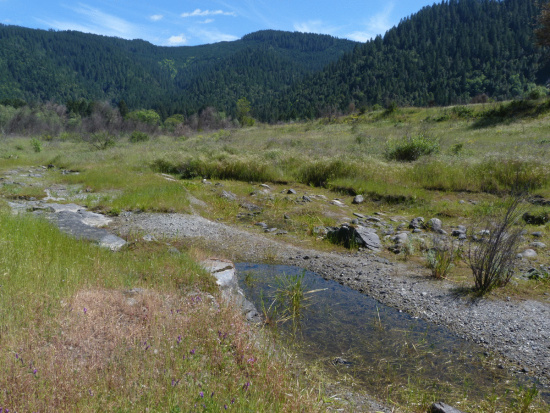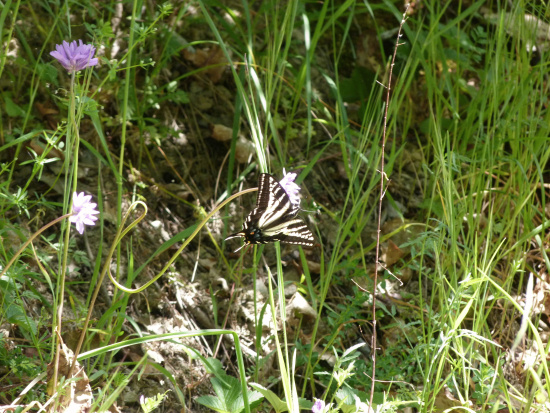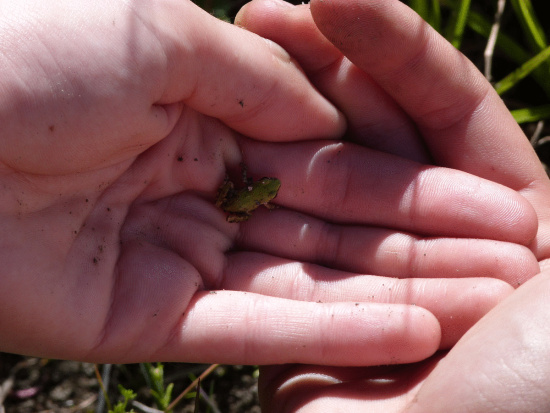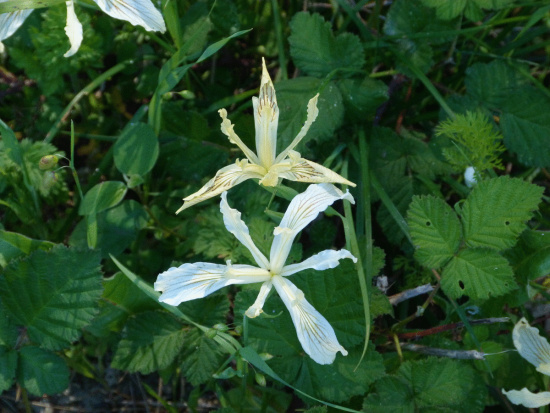LoCO Sunday Magazine
- GOOD PEOPLE OF HUMBOLDT: God Bless Your Wild Soul
- NIKKI’S NATURE RAMBLE: Of Birds, Bees and a Rare Wildflower
- GROWING OLD UNGRACEFULLY: Nothing to Do, Nowhere to Go
- LETTER FROM ISTANBUL: Journey of Muses
Sunday April 25th- It’s midafternoon when we park on a pullout along State 169, just a few miles north of Weitchpec, and it already feels like summer. The hum of the telephone wires above and the muffled roar of the Klamath River in the valley below breaks the warm stillness. The reason we pulled over is gracefully feeding on a nearby mustard, and it doesn’t seem to notice us amongst the feast of blues, fuchsias, yellows, and reds that make up the wildflowers blooming on the side of the road. The Pale Swallowtail (Papilio eurymedon) butterfly continues its meal on nectar and pollen until its peace is interrupted by a rival, and both Swallowtails aggressively flutter back-and-forth, making it hard to snap the perfect photo. We get back in the car and let the Swallowtails be. The day is flying by and we need to get to Orleans to find a rare wildflower.
The Klamath Iris (Iris tenax klamathensis), found only in the Orleans area, is a white, almost nondescript flower. It’s one of those flowers one can see from their car and not even take a second glance. But before we can begin our search, it’s time for lunch. We turn off State Route 96, south of the city limits onto a sketchy-looking gravel road that leads down to the river bar, a place that some people call Camp Creek River Mouth. It’s 87 degrees, and we are sweating through our jeans when we park the car next to a patch of Cottonwoods and hop out to make sandwiches. Even in the middle of this stifling-hot day as we enjoy our food, male Orange-Crowned Warblers (Vermivora celata), Nashville Warblers (Leiothlypis ruficapilla), and the Lazuli Buntings (Passerina amoena) still gather up enough energy to advertise their territories to prospective suitors. They have their priorities in order.
Walking down the road toward the river, my boyfriend takes a shortcut from the trail, through a field, and down into a seep that is slowly drying up. What we encounter is unexpected: the low-pitched buzzes of a large swarm of bees gathering together to uptake minerals from the puddles. The Carpenter Bee (Xylocopa sp.) is recognizable with its conspicuously large grey-metallic abdomen, buzzing along like an elephant on wings. As I kneel beside a puddle to observe tadpoles, whose days are numbered in their slowly evaporating nursery, I notice movement all around my feet. Newly metamorphosed Pacific Tree Frogs (Psuedacris regilla) that could easily fit on a dime are trying to hide behind blades of grass from the sweltering sun. Cupping one of these tiny creatures in my hand, I take a moment to take in all the movement coming from above my head and feet.
Heading back toward the river, the fields are alive with blooming color as the sun begins to wane. Orange California Poppies (Eschscholzia californica) and blue Brodiaea contrast with last year’s dried grass. We stop and get a glimpse at a Grey Flycatcher bob its tail on a pine then fly off in search of prey. After taking a moment to enjoy the view of the Klamath, we begin our hike back. Then we hear it: a soft quiet buzz, which means there’s a male hummingbird displaying somewhere nearby. With an Allen’s Hummingbird (Selasphorus sasin) in view, we trace his parabolic courtship flight with our binoculars, back-and-forth, back-and-forth, until he shoots high into the sky, and dives down just as fast to finish his dance in a “J” formation, a dramatic finale.
After a much-needed pit stop for ice tea at the general store, we explore the Gasquet-Orleans Road (an ambitious project of the National Forest Service, which never reached its terminus in Gasquet, which is to say it dead ends!) We’re down to primary reason we came here: the Klamath Iris. Since we started our adventure on Bald Hills Road, we had been stopping to take photos of as many Iris along the roadside, hoping that one of our snapshots would be of this intriguing endemic. By the time we reach the “GO” road, I am ready to pass out in the car. Then he spots an Iris, a pale white Iris, growing in a shady ditch next to a roadside ditch. “I’m going to take a photo, babe.” At this point, I am over Iris photography; the heat of the day slowly putting me in a coma. I groggily reply, “Cool. Do whatever.” He snaps a single photo and heads for the car. After a little more exploring, we call it a day, wishing for a shower, pillows, and that three-day weekends were a “thing”.
Afterward- This past weekend, we took our trip photos to the North Coast California Native Plant Society at the Manila Community Center and showed them to experts. Most of the Iris we encountered were the Slender Iris (Iris tenuissima), but the last single photo (the one that my boyfriend took because I was too lazy) appears to indeed be the Klamath Iris. Thank God for my boyfriend!
Crown Jewel: Klamath Iris (Iris tenax klamathensis)




CLICK TO MANAGE